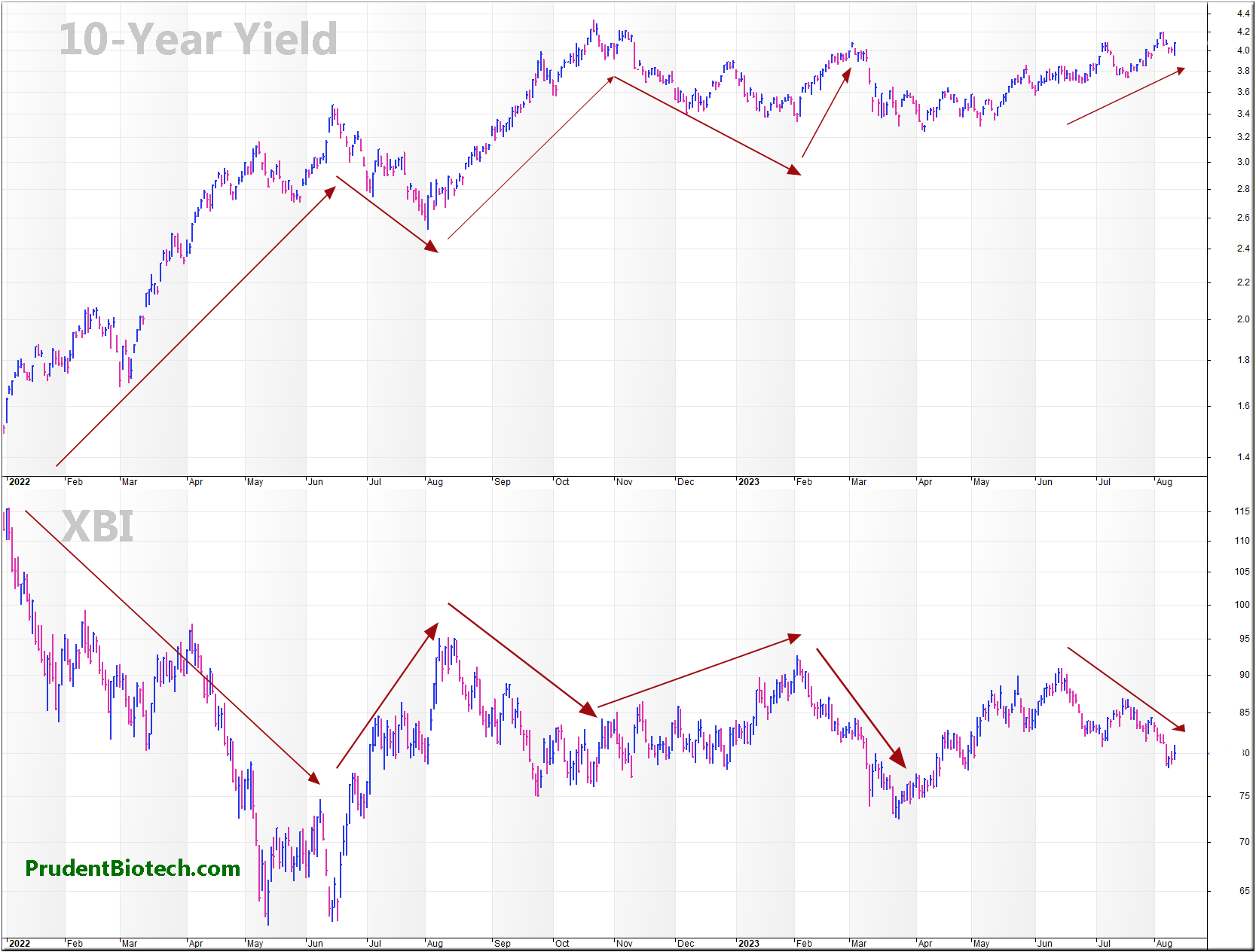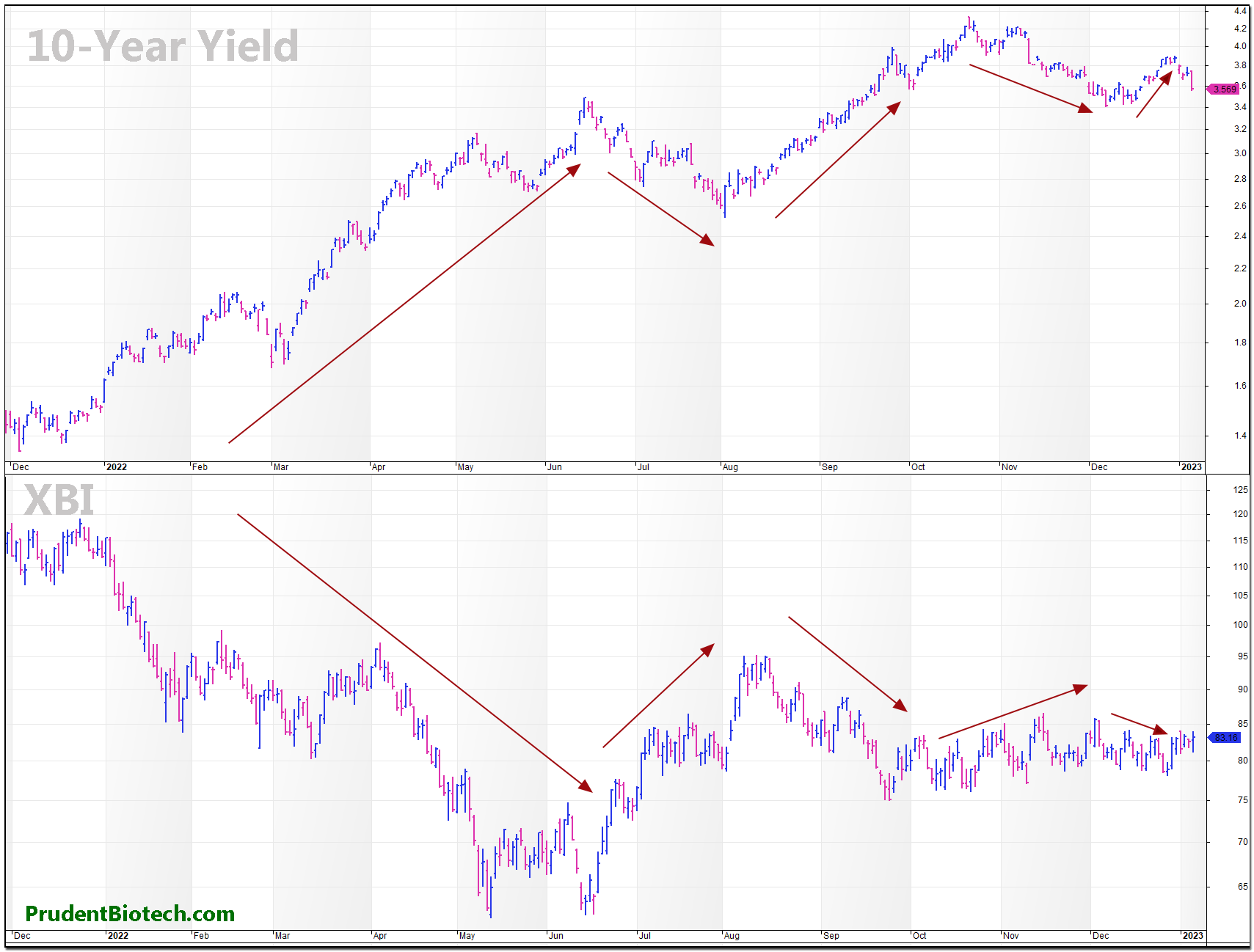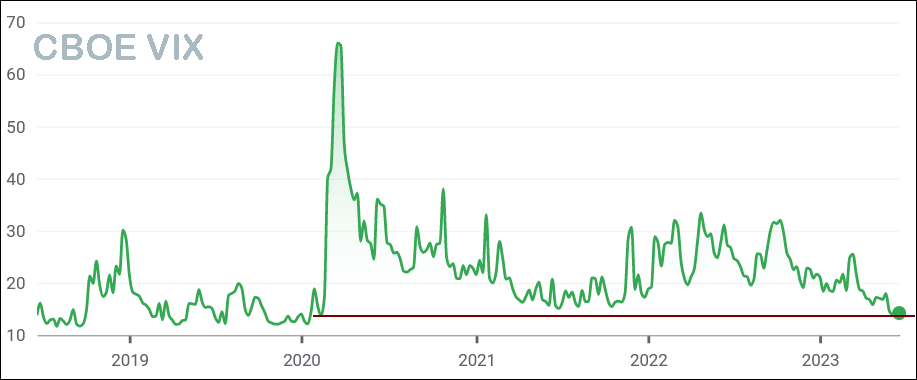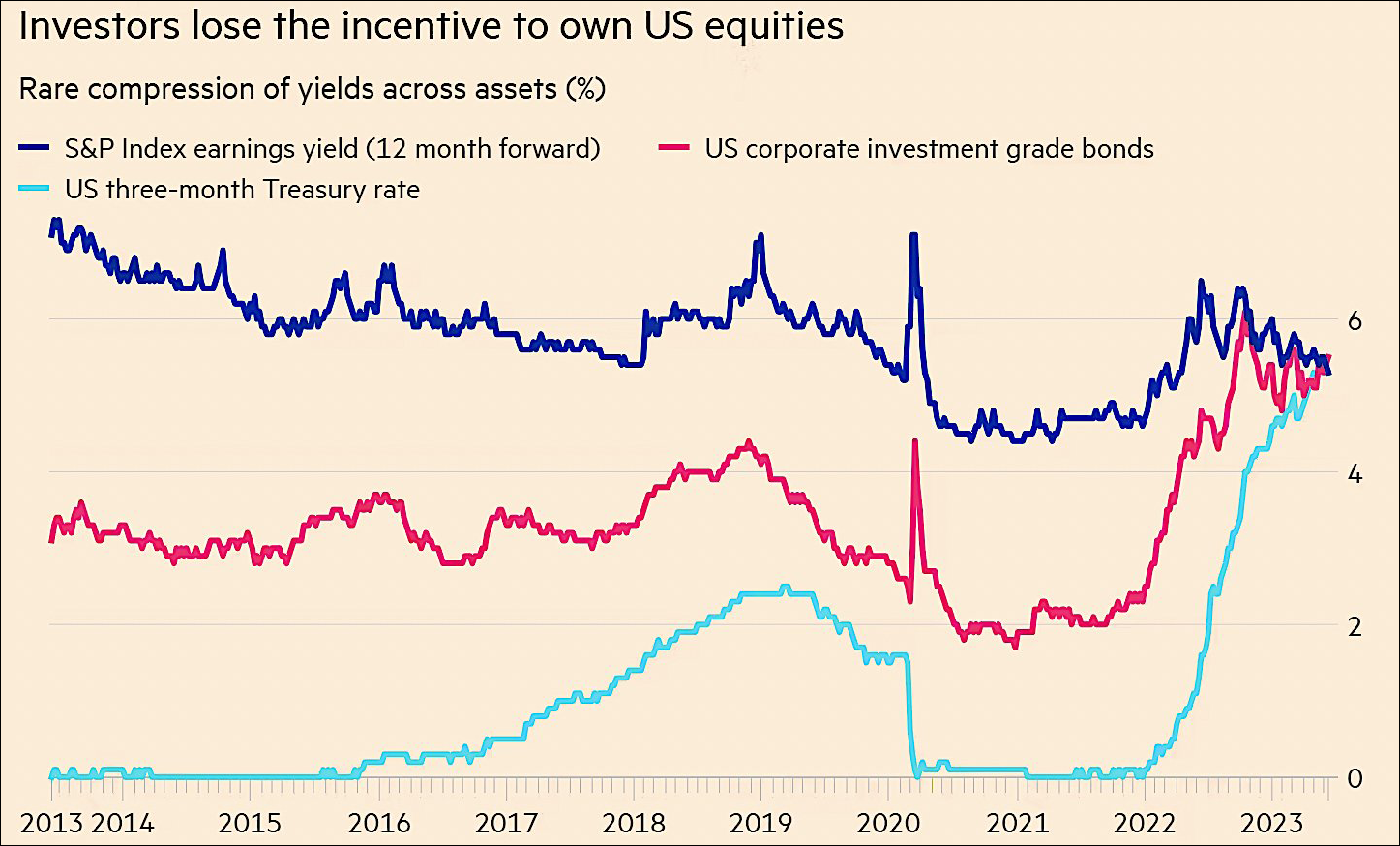Biotech Pulse
The biotech landscape faced a challenging first half of 2023, marked by rising interest rates and fluctuating market conditions. Despite the AI-driven market rally in the second quarter, biotech stocks experienced little benefit. The larger-cap Nasdaq Biotechnology Index (IBB) declined by 3%, while the S&P Biotechnology Index (XBI), focusing on a broader group of smaller cap companies, remained neutral. Additionally, the healthcare sector trailed the broader stock market, posting a decline of over 2% in the first half.
In our January annual outlook, we predicted a challenging and chaotic first half for biotech stocks due to the steeper rise in interest rates during this period. However, the outlook for the second half appears more favorable, with the strongest performance anticipated in the fourth quarter.
Biotech Tied to 10-year Yield
One pivotal factor influencing the biotech industry's performance is the direction of the 10-year bond yield. This term yield plays a crucial role as a discount rate in valuations, particularly for higher-risk growth companies that constitute the biotech group. An intriguing and robust negative correlation has emerged between the yield curve's trajectory and the biotech industry's fortunes.
The inverse relationship between bond yields and biotech performance is evident in the above chart. The Federal Reserve's rate hike campaign led to an early decline in biotech stocks, and over the past year, biotech indexes have consolidated within a certain range. As the Fed prepares to conclude its rate hike campaign, the 10-year yield is expected to stabilize or even decrease, albeit not necessarily rapidly. As the expectation has now set in that inflation can be curbed without sending the economy into a recession, the longer-term yields are inching higher on bets of a stronger economy. Recent months have seen the 10-year yield inch higher, from 3.3% in early April to around 4.1%, nearing its highest level since 2008.
Given this strong correlation, predicting biotech performance now relies on anticipating the direction of the 10-year yield. However, due to the diverse range of variables, making this yield call is far from straightforward.
Inflation Trends and 10-year Yield
Longer-term yields exert a profound influence on the costs of various financial products, including mortgages, auto loans, and stocks. Sustaining current yield levels or even further increases without triggering an economic slowdown seems challenging to us. High yields are a strong brake on economic growth. Besides their direct impact on consumer finances, high yields also send deficits soaring, for federal debt now has to be serviced by borrowing at ever higher interest rates. This is an unfolding situation, but we believe it will be a challenge for the economy to continue growing consistently with such a high yield burden. Any sign of a slowdown will push longer-term yields lower, which should be generally favorable for biotechs.
Inflation progress might be uneven, yet it is unmistakably on a downward trajectory. China's role as a global growth engine and its struggles this year with deflationary forces and diminishing demand are contributing to global progress on inflation. With China's consumer prices falling for the first time in over two years and producer prices declining year-over-year for the past 10 months, the ongoing demand recession aids in controlling inflation. Consequently, a China slowdown reduces demand pressures and fosters supply chain healing at a time when the resiliency of U.S. economic growth contributes towards pricing pressures.
While the exact pace of inflation's decline remains uncertain, a swifter trajectory could heighten expectations for a rate cut. We anticipate that 10-year yields will favor biotech and growth stocks in the fourth quarter, driven by the prospect of a rate cut later in the first half of 2023.
Robust M&A Activity
Biotech deals continue to outpace last year's numbers, reflecting nearly $90 billion in transactions so far this year. Key acquisitions include Merck's (MRK) purchase of Prometheus Biosciences for ~$11 billion, Biogen's (BIIB) acquisition of Reata Pharmaceuticals (RETA) for over $7 billion, Astellas Pharma's (OTCPK:ALPMF) acquisition of Iveric Bio for ~$6 billion, and Eli Lilly's purchase of Dice Therapeutics for about $2.5 billion. Iveric Bio was part of the Prudent Biotech model portfolio and Dice Therapeutics was part of the Prudent Small Cap model portfolio.
The rise in biotech deal-making stems from several factors, including the need for large pharmaceutical companies to expand their drug pipelines and the diminishing returns on in-house pharma R&D. The attractive prospect of M&A is accentuated by lower biotech valuations, well-funded pharmaceutical companies and their rising valuations, and promising biotech results. As the Fed's rate hike cycle nears its end, reduced interest rate uncertainty will further encourage M&A interest. After a period of lengthy consolidation, biotech valuations will likely pick up momentum later in the second half and not remain depressed, a point that large pharma would be keenly aware of. The second half can likely witness a further ramp-up in transaction activity
Conclusion
Prudent Small Cap portfolios, include Vertex Pharmaceuticals (VRTX), Regeneron Pharmaceuticals (REGN), Intra-Cellular Therapies (ITCI), BridgeBio (BBIO), Exelixis (EXEL), Xenon Pharmaceuticals (XENE), Viking Therapeutics (VKTX), Akero Therapeutics (AKRO), CymaBay Therapeutics (CBAY), Rhythm Pharmaceuticals (RYTM), Corcept Therapeutics (CORT), and Nuvalent (NUVL).
As with any volatile industry group, cautious research and due diligence are essential before making investment decisions in biotechnology.
The article was first published on Seeking Alpha.




